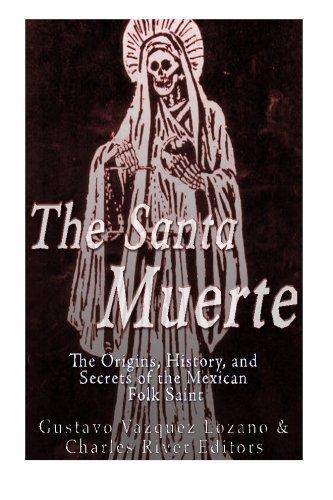Description
*Includes pictures *Includes contemporary accounts and descriptions of the cult *Includes online resources and a bibliography for further reading European and American scholars are fascinated by her. She is exotic; they look at her with the romantic look of the anthropologist and the sociologist; she is Mexican, colorful, and third-worldly (not to mention that she is a fantastic reason to get funding from their universities). Many see in her, correctly, a prodigious syncretism, so common in the troubled history of Latin America. The Catholic hierarchy, the predominant religion in Mexico, is horrified; the church calls her a satanic cult figure, associated with organized crime. Similarly, governmental authorities watch cautiously, deny official recognition to her “churches,” and destroy her solitary shrines in northern Mexico, in roads riddled with crime. However, among her followers —besides prisoners, drug traffickers and many well-meaning men and women seeking other spiritual alternatives— there are some working on the side of the law, especially soldiers and police officers. Enter La Santa Muerte, the “Holy Death”, a skeletal figure dressed like a Catholic saint, whom her faithful raised to the altars without asking anyone for permission. From her followers, she gets not only candles, prayers and petitions, as any other saint; they also call her loving names that to the outside observer would seem to be a joke: beautiful, skinny, cute girl, little mother, and at the height of the confusion, "virgin". What then is the Santa Muerte movement? As a practice, it has borrowed extensively from Catholicism, Santeria and even New Age, depending on the leader of the moment and the region, from Central America to Chicago. In the variety most similar to Catholicism, people find images of the skeleton dressed in a green robe with stars and golden borders, with rays of light coming out of her head: a negative image of the Virgin of Guadalupe. "It's our little mother, our skinny, she always takes care of us," says an anonymous woman who refers to Santa Muerte in the same way Mexican Catholics refer to The Virgin. Although fleshless, Santa Muerte is, without a doubt, a female figure (in the Spanish language, "death" is a feminine noun). But the garments of the Virgin of Guadalupe are not the only thing that the "white girl" borrowed. In fact, one of the main features of this cult is its extraordinary elasticity. It will adapt to anything. Anyone can dogmatize. Everybody contributes according to his or her feelings and experiences. Young cholos (street punks) prefer a version more reminiscent of some Iron Maiden albums, and the elderly of the Tepito neighborhood, another more similar to those found at small town churches, with flowers in her hair, and a robe with embroidery. Therefore, for the casual observer watching the candles, the flowers, listening to the murmur of prayers and noticing the insistence on receiving miracles, Santa Muerte is like another Catholic saint, despite the fact the cult of the Holy Death is not only not approved by any Christian denomination but is not even tolerated. This is the story of Santa Muerte, the so-called cult of crisis, a red-hot combo of a kermesse (Mexican carnival), Catholicism and New Age; a hedonist practice but involving bodily sacrifice too. It is an expression of economic, psychological and social forces, bigger than perhaps any of her acolytes suspect. The Santa Muerte: The Origins, History, and Secrets of the Mexican Folk Saint looks at the folk saint and the manner in which her cult grew. Along with pictures of important people, places, and events, you will learn about Santa Muerte like never before.
Binding: Paperback
Physical Info: 30 pages
Publish Date: May 1, 2016

